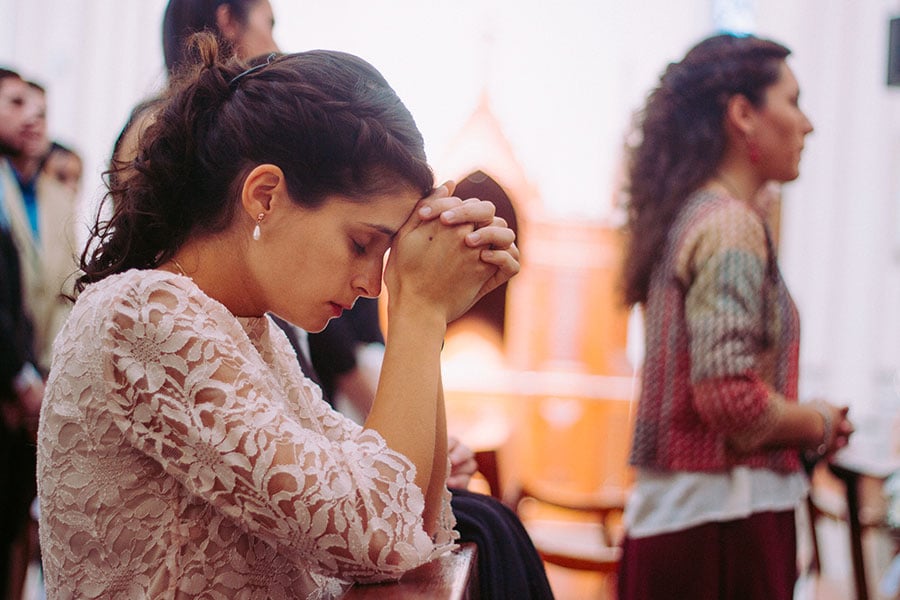Common gestures enhance reverence, unity

To an outsider looking in – and sometimes even to Catholics ourselves — the gestures associated with the Mass can be a bit puzzling. Standing. Sitting. Kneeling. Genuflecting. Bowing.
In this installment of “Understanding the Mystery,” Father Thu Nguyen explains the meaning behind the gestures, when they’re performed, and why they’re important to the faithful celebration of the Mass.
What is the meaning behind the main gestures in the liturgy (standing, kneeling, sitting)?
Father Nguyen: Let’s look at those three main gestures. They’re described in the Roman Missal, paragraph 42: “The gestures and posture of the priest, the deacon, and the ministers, as well as those of the people, ought to contribute to making the entire celebration resplendent with beauty and noble simplicity, so that the true and full meaning of the different parts of the celebration is evident and that the participation of all is fostered.”
That’s why you and I have the common postures. You can say, “Well, I like piety, so I’m going to kneel at this time” while the rest of the assembly is standing. But standing also has meaning.
So, let’s go back to [Pope Francis’] document Desiderio desideravi, paragraph 53. He writes, “Every gesture and every word contains a precise action that is always new because it meets with an always new movement in our own lives. I will explain what I mean with a simple example. We kneel to ask pardon, to bend our pride, to hand over to God our tears, to beg His intervention, to thank Him for a gift received. It is always the same gesture which, in essence, declares our own being small in the presence of God.”
That’s why, at the Eucharistic Prayer, every one of us kneels. The priest celebrating, he genuflects. He bows after the Consecration because he’s not only acknowledging the presence of God changing from bread to Body, wine to Blood, but also acknowledging the Resurrection of Jesus Christ. The third genuflection, when he breaks the Body and places it into the chalice of precious Blood, symbolizes the union of the Body and Blood, the Resurrection of our Lord.
He genuflects; that means he’s adoring. So, the kneeling gesture is important.
Why and when do we stand during Mass?
Father Nguyen: Standing is a sign of respect and honor to God, the celebrant, and the sacred elements in the liturgy. From the earliest days of the Church, this posture has been understood as the stance of those who have risen with Christ and seek the things that are above.
Our standing shows full reverence in prayer before God, not out of pride but in humble gratitude, acknowledging the salvific things God has done in creating and redeeming each one of us. The posture of standing acknowledges the wonderful gift through baptism of sharing in the life of God. Standing also is appropriate for hearing and receiving the words and deeds of the Lord during the proclamation of the Gospel.
The USCCB has chosen standing as the posture for the reception of Communion.
When do we sit and why?
Father Nguyen: The faithful should sit, on the other hand, during the readings before the Gospel, the responsorial psalm, the homily, and during the preparation of the gifts at the offertory; and, if appropriate, they may sit or kneel during the period of sacred silence after Communion.
Sitting is the posture of listening and meditation especially during the celebration of the Liturgy of the Word. When sitting, the faithful should strive to assume a seated posture as anticipative and attentive rather than merely a posture at rest (slouching or leaning back, for example).
For the sake of uniformity, reverence, and communal unity in gestures and bodily postures during the one and same celebration, the faithful should follow the teachings and instructions of each conference of their country, their bishops, and especially according to what is laid down in the Roman Missal.
